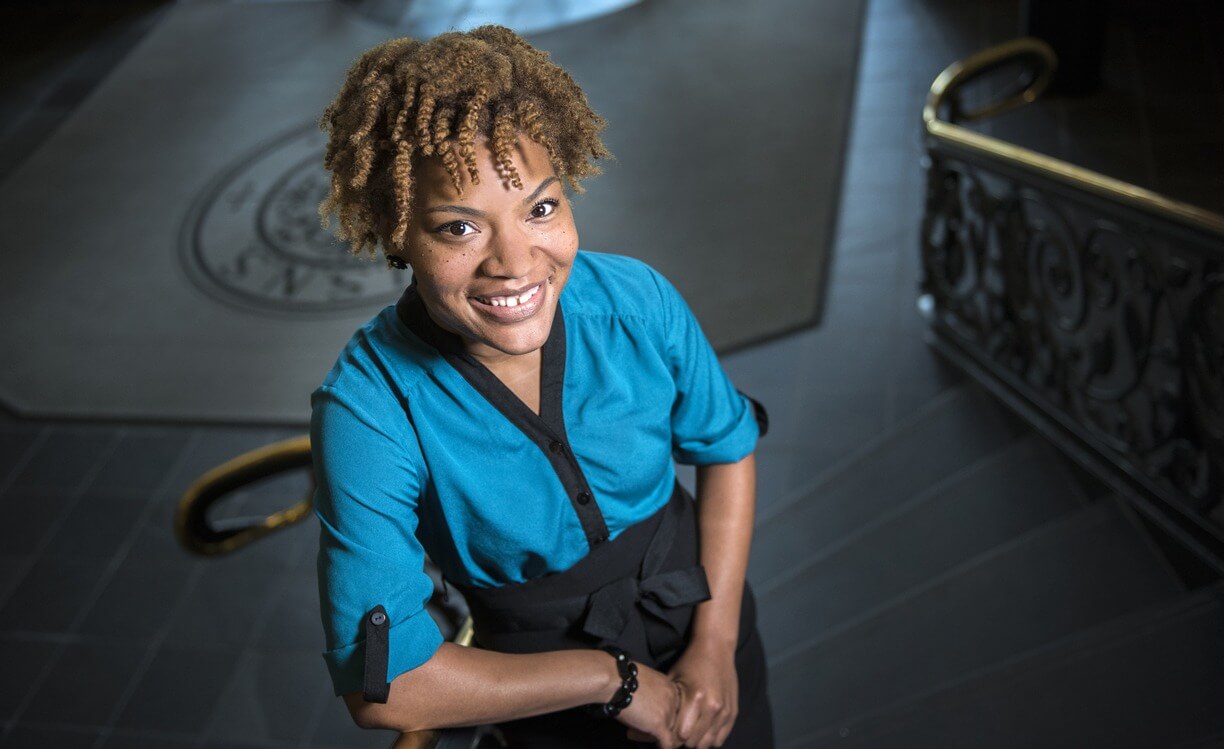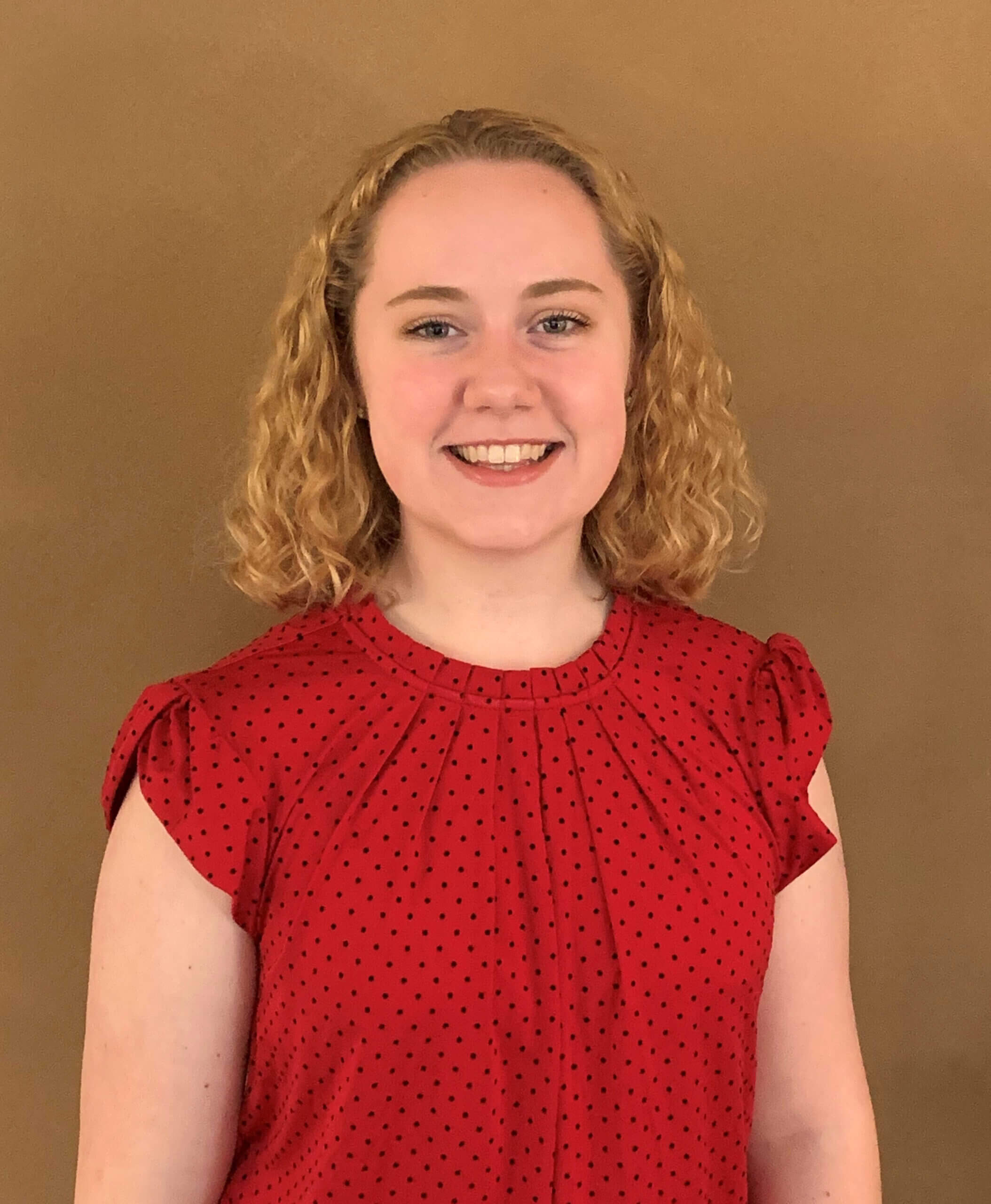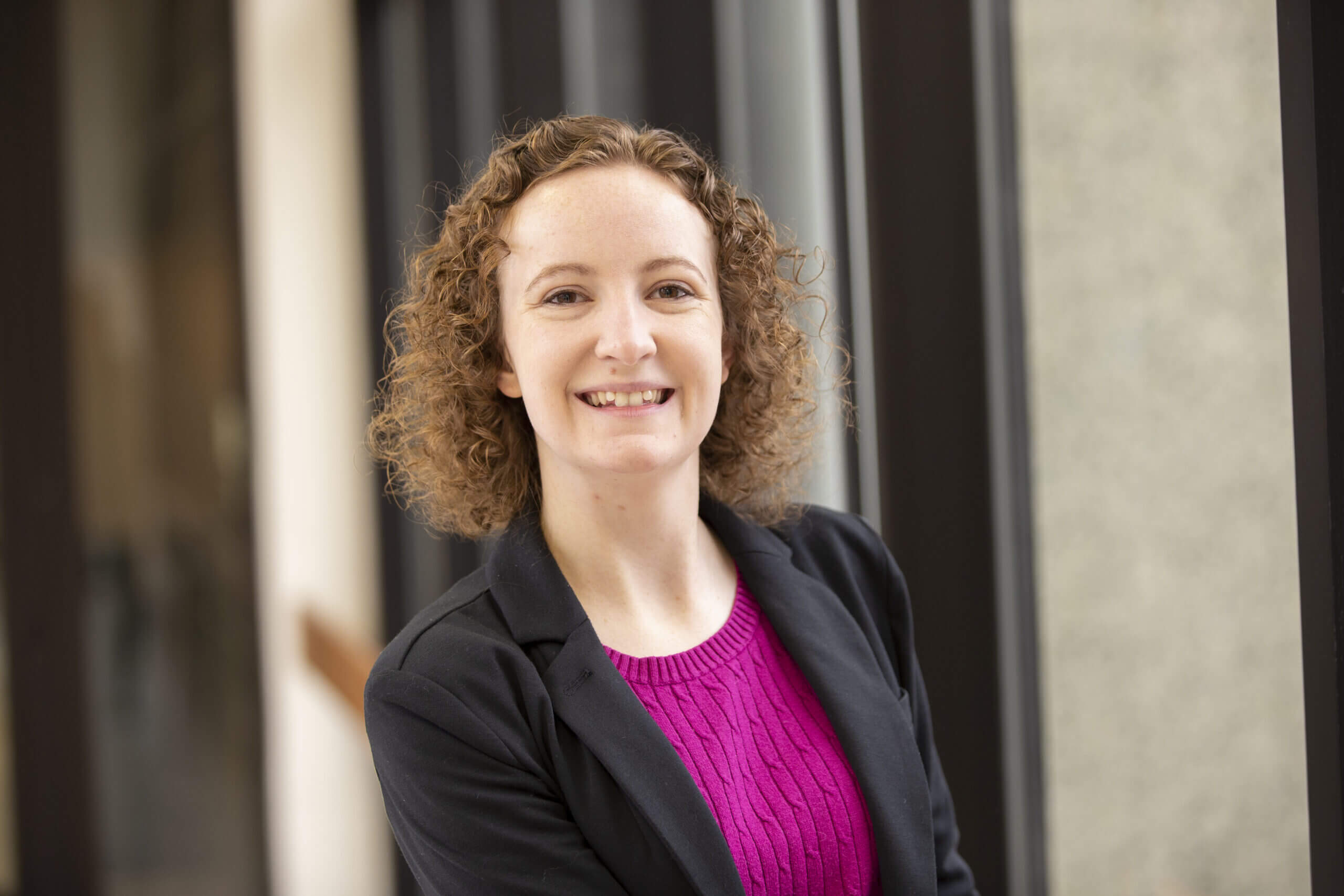Celine Taylor wanted to distribute more surveys investigating the distracted driving habits and traffic-related injuries of motorcycle riders in Myanmar.
Isabella Guizzetti hoped to return to an NIU lab after Spring Break to repeat some of her experiments on hepatocellular carcinoma cell growth to collect additional data.
Brianne Maksimovic wished she could feel the comfort of face-to-face explanations and demonstrations from her research mentor as she explored the effects of galactic cosmic rays on gross motor control.
None of that was possible, of course.
Yet none of that could stand in the way of the Taylor, Guizzetti and Maksimovic earning the top places in their respective categories in the 2020 version of Undergraduate Research and Artistry Day and the Community Engagement Showcase.

Destiny McDonald
Destiny McDonald, associate director of NIU’s Office of Student Engagement and Experiential Learning, is proud of all of the resilient students who presented their 95 projects in a virtual format.
“We know that students have worked very hard on their engagement projects through the year, whether it was research or community engagement, and we wanted to still have a way to showcase that to the community,” McDonald says. “We were happy to pull it off.”
Following stay-at-home orders that shut down Illinois in March to slow the spread of COVID-19, staff at OSEEL acted quickly to move their event online.
Student-participants either recorded narrations or filmed videos to accompany their PowerPoint slides; the website was open for three days, from April 28 through April 30.
“This was our 10-year anniversary for Undergraduate Research and Artistry Day. We were very excited to be celebrating that, and we didn’t the 10-year to just not happen,” McDonald says. “We know how hard students are working, and how difficult this pandemic has been for them. A lot of events have been taken away. We had a lot of seniors, and this was their last hurrah.”

Brianne Masksimovic
Maksimovic is among those May graduates; the psychology major from Batavia plans to begin a master’s program in social work this fall to pursue a career helping people with addictions and their mental health.
Her URAD project with faculty mentor Doug Wallace examined how rats responded to a simulation of the kind of radiation that would confront astronauts traveling to Mars. Would such exposure impact their gross motor functions?
Although the findings were insignificant – maybe the level of radiation wasn’t enough, she says, or maybe other gross motor assessments should be used in the future – Maksimovic believes that URAD judges were impressed not only by the topic itself but also by the helpful illustrations on her poster.
“I had graphs showing percentages of normal contacts, no grasps and shallow and deep slips for each limb, and next to each of these graphs was a picture of what that type of grasp or slip looked like. I think it was presented well visually,” she says. “The graduate students in the neuropsych lab also helped me out immensely in helping with revisions and advice, so I really don’t think I would have won any kind of award without their help.”

Isabella Guizzetti
Guizzetti, a junior biology major from Carol Stream, worked under the guidance of Barrie Bode, chair of the Department of Biological Sciences, and Paige Bothwell, the department’s biomedical research instrument core scientist and core microsopy facility manager.
She used genome-editing technology to alter DNA sequences and gene function to see how modified liver cancer cells would respond to metformin, a medicine for treating Type 2 diabetes, and sorafenib, a chemotherapy that can treat cancer of the kidney, liver and thyroid.
Injected into rats, the cells caused tumors to grow; would they also grow in a dish with the drugs present – or would the drugs kill them?
Metformin prevented one of the cells from growing while it had little affect on the other, Guizzetti says. Sorafenib, on the other hand, produced “data all over the place” – something that made Guizzetti wish she could head back to Montgomery Hall when COVID-19 closures struck.
“At first, I was disappointed because I couldn’t be in the lab anymore, and I love to work hands-on there,” she says. “Luckily, I had finished the bulk of my in-lab research at that point. My plan after Spring Break was to repeat stuff and get more data points, but I knew I could still put together a project based on what I had.”
One of the casualties of the virtual URAD – face-to-face interactions with visitors to the poster tables in the Duke Ellington Ballroom – might actually have helped Guizzetti earn her first-place award.
“When I recorded, I wanted it to feel like I was actually at URAD. I remembered having fun being able to have those conversations with people and talking about it organically,” she says, “so I didn’t have a script written. I just talked about what was on my poster.”

Celine Taylor
For Taylor, who will graduated in August with her bachelor’s degree in public health, the inspiration for her Community Engagement Showcase project began last summer when she visited Myanmar as an intern with the Global Environmental Health Lab.
“I noticed that a lot of people were driving motorcycles everywhere – a lot more than we have here – and there are a ton of people on the road. Some would wear helmets. Some would not,” says Taylor, who is from Elmhurst.
“I got the idea that might an issue, and I just wanted to see the connection between road safety and the habits of the drivers,” she adds. “Do certain behaviors of Myanmar drivers indicate a higher risk of traffic accidents? If so, that data could be useful to improve safety in many countries.”
While Taylor hopes that she can work with universities in Myanmar whenever they are able to resume amid the pandemic, she for now noted differences in the motorcycle-riding habits between men and women using her sample of 150 people. That merits more research, she says, as do her questions regarding cell phone use and distracted driving.
A first-time participant in the Community Engagement Showcase, Taylor enjoyed the process despite the unexpected challenges.
“When the coronavirus issue happened, I was able to do online meetings with my mentor, Tomoyuki Shibata,” she says. “He was really flexible.”
Like Guizzetti, she also worked to make her recorded narrative personal for the virtual visitors.
“Normally, you can just talk to people and answer questions,” Taylor says. “For this, I had to get all the information I anticipated being needed recorded in advance. That was an added thought process for me to think of what questions people would have.”
Participants in the showcases weren’t the only ones who gained new knowledge, of course.
“There was definitely a learning curve for our staff. We had to think very quickly, and learn things very quickly. The logistics of it were very interesting, for sure, but we were very excited to be able to still offer this opportunity for students,” McDonald says.
“We’ve also learned that the virtual format can be very helpful moving forward, regardless of how things turn out with whatever this ‘new normal’ looks like,” she adds. “We’ve learned that doing this online can draw a bigger audience and allow more people the opportunity to participate in our events.”
URAD Arts, Education, Health, Humanities and Social Sciences Posters
1st Place: Brianne Maksimovic (Poster #85)
- Space Rat Force: Effects of Galactic Cosmic Rays on Gross Motor Control in Rats Anomalies
- Department: Psychology
- Faculty Mentor: Dr. Doug Wallace
2nd Place: Justine Rivard (Poster #48)
- Intriguing or unsettling? How Dimensions of Curiosity Predict Reactions to Novelty
- Department: Psychology
- Faculty Mentor: Dr. Amanda Durik
3rd Place: Ashlyn Thurman, Lynn Kang and Maria Medrano (Poster #97)
- The Effects of Child ADHD Symptoms and Parental Stress on Parental Self-Efficacy
- Department: Psychology
- Faculty Mentor: Dr. Julia Ogg
URAD Science, Technology, Engineering and Mathematics Posters
1st Place: Isabella Guizzetti (Poster #95)
- The Effect of Metformin and Sorafenib on ASCT2 Knockout Hepatocellular Carcinoma Cell Growth
- Department: Biological Sciences
- Faculty Mentor: Dr. Barrie Bode
2nd Place: Meagan Paramo and Makena Paramo (Poster #24)
- Evolutionary Conflict and Coral Bleaching: What Doesn’t Kill You Makes You Stronger
- Department: Biological Sciences
- Faculty Mentor: Dr. Neil Blackstone
3rd Place: Pruthvish Patel, Graice Veronda and Diana Miguel (Poster #10)
- Attachment of Microbes to LDPE Plastic Following Chemical Treatments
- Department: Biological Sciences
- Faculty Mentor: Dr. Scott Grayburn
Community Engagement Showcase
1st Place: Celine Taylor (Poster #109)
- Traffic-Related Injuries in Myanmar
- Department: Public Health
- Faculty Mentor: Dr. Tomoyuki Shibata
2nd Place: Dioco Reyes and Emily Grobe (Poster #38)
- Community Development in Grand Rapids, Michigan
- Mentor: Michaela Holtz
- Organizations: Huskie Alternative Breaks & Habitat for Humanity of Kent County
3rd Place: Riley McCabe and Hannah Thompson (Poster #61)
- Memphis: Civic Engagement
- Mentor: Michaela Holtz
- Organizations: Huskie Alternative Breaks & Serve901
